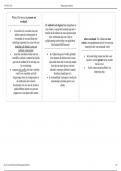Exam (elaborations)
Pharmacology for the Primary Care Provider: Test Bank: NR 508 Advanced Pharmacology (Full Test Bank 1-15 Units/chapter 1-73) Chamberlain College of Nursing
- Institution
- Chamberlain College Of Nursing
Pharmacology for the Primary Care Provider (4th Edition) Table Contents Unit 1: Foundations of Prescriptive Practice Chapter 1: Prescriptive Authority and Role Implementation: Tradition vs. Change Chapter 2: Historical Review of Prescriptive Authority: The Role of Nurses (NPs, CNMs, CRNAs, an...
[Show more]












